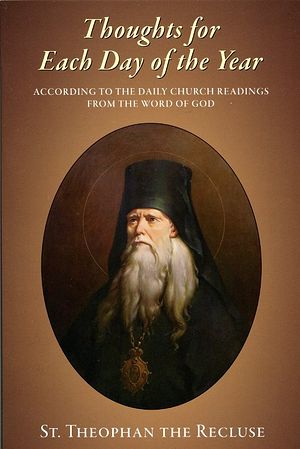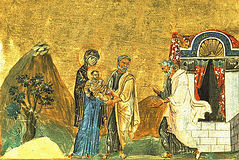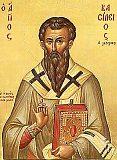

| Previous day | Next day |
| Old Style
January 1
|
Wednesday |
New Style
January 14
|
| Tone 6. | Fast-free period.
|
![]() The Circumcision of Our Lord Jesus Christ
The Circumcision of Our Lord Jesus Christ
![]() St. Basil the Great, archbishop of Caesarea in Cappadocia (379).
St. Basil the Great, archbishop of Caesarea in Cappadocia (379).
Martyr Basil of Ancyra (ca. 362) St. Athanasius, bishop of Mogilev and Polotsk (1801). St. Emilia, mother of Sts. Macrina, Basil the Great, Naucratius, Peter of Sebaste, and Gregory of Nyssa (4th c.).
New Hieromartyrs Platon (Kulbush), bishop of Revel, Estonia, and archpriests Michael Bleive and Nicholas Bezhanitsky (1919) , and Alexander (Trapitsyn), archbishop of Samara (1938).
St. Eugendus, abbot of Condat in the Jura Mountains (510). St. Fanchea of Killeany (Ireland) (ca. 520). St. Fulgentius, bishop of Ruspe in North Africa (533). St. Theodosius of Tryglia, abbot. St. Clarus, abbot of St. Marcellus Monastery in Vienne (Gaul) (ca. 660). New Martyr Peter of Tripolis in the Peloponnese, at Temisi in Asia Minor (1776). St. Gregory, bishop of Nazianzus, father of St. Gregory the Theologian (374).
Repose of Sergius A. Nilus, spiritual writer (1929), Nun Faina of Starobelsk (1972), and Archimandrite Mitrophan (Manuiloff) (1986).
Thoughts for Each Day of the Year
According to the Daily Church Readings from the Word of God
By St. Theophan the Recluse

New Year’s Day. The Circumcision of the Lord. Saint Basil the Great. [Col. 2:8–12; Luke 2:20–21, 40–52].
Since New Year’s Day is the beginning of the days of the year, we ought to gather in our soul those thoughts, feelings and dispositions that would direct our affairs throughout the year in a Christian way. We will find this the moment we bring to mind what New Year’s Day is in the spiritual life. In the spiritual life, New Year’s Day is when one who has been living carelessly becomes zealous about salvation and pleasing God. When one makes this resolution, then all is rebuilt afresh both internally and externally, upon new beginnings—the old passes away and all is new. If you have this, renew it; if not, acquire it—and for you this will be New Year’s Day.
A worthy celebration of the feast of the Circumcision of the Lord and of the commemoration of Saint Basil the Great are also tied with this. The essence of this change we have mentioned is that a person begins from this moment on to live solely for God, for his salvation; whereas previously he lived exclusively for himself, preparing destruction for himself. Now he abandons former habits, all comforts and all in which he found pleasure; he cuts off passions and lustful dispositions and takes on works of strict self-denial. Such a change precisely represents what, according to the Apostle, the circumcision of the heart should be. The celebration of the circumcision of the Lord reminds us of this and obligates us to do it, while St. Basil the Great provides us with an example to follow. So all the themes which crowd our consciousness on New Year’s Day come together into one—our inner renewal through the circumcision of the heart. If it pleases the Lord to give someone this mindset on New Year’s Day—that is, not only to think in such a way, but also to bring all of this into his life—he will celebrate New Year’s Day in a most perfect Christian manner, and will prepare for a Christian passing of the whole year. On the following New Year’s Day he will only have to renew and enliven what he has now taken on.

